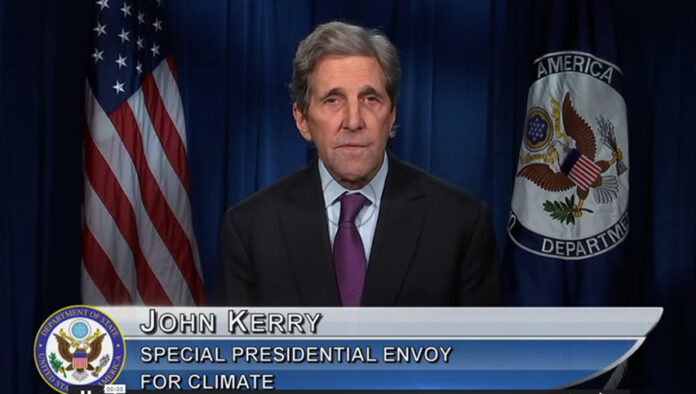Solar energy is most powerful tool that the world has in its toolkit to combat climate crisis: John Kerry
Addressing the International Solar Alliance’s Fourth General Assembly, where 106 countries are participating in the discussions, John Kerry, U.S. Special Presidential Envoy for Climate and 68th U.S. Secretary of State, highlighted the opportunities in the solar sector towards climate action and India as an investment destination for solar power
“Solar energy is at the heart of the urgent climate action”, U.S. Special Presidential Envoy for Climate John Kerry noted at the Fourth General Assembly of the International Solar Alliance’s (ISA) as he urged nations to take dramatic action to keep the 1.5-degree Celsius temperature rise and mid-century net zero emissions targets within reach. He added that President Biden recognizes the clean energy opportunity of Solar in the United States’ efforts to achieve the newly proposed NDC of 50-52% reduction in U.S. economy wide greenhouse gas emissions by 2030. He said that “the US department of energy recently published a roadmap for how solar energy could economically generate 40% of the country’s electricity supply by 2035. With 1000 GW of installed solar energy, solar would play the biggest role in a completely carbon free electric power sector by 2035.”
Delivering the keynote address at the inaugural ceremony of the ISA General Assembly where 106 countries are participating in the discussions, Secretary Kerry applauded the International Solar Alliance and the leadership of India, France and member countries of the ISA Assembly in their collaboration to advance the global clean energy transition: “It is really terrific to see India leading the ISA. India is a close partner and the United States strongly supports India’s goal of reaching 450 GW of renewable energy by 2030. We believe that it’s absolutely doable and will be done. India has already set an example for emerging economies by reaching 100GW of renewables. What India has demonstrated with its low-cost solar auctions and build out of the transmission grids and massive solar parts program and other innovative policy tools can be replicated all over the world.” He added that the ISA is critical to reducing greenhouse gas emissions and has an opportunity to accelerate Solar’s growth with member countries blessed with the world’s strongest sunlight.
Speaking on India- U.S. ties and calling India, “a red-hot investment destination for solar power,” Secretary Kerry shared that, leading countries deploying solar power from India to United States are seeing the need for energy storage to balance the intermittency of renewable energy. Harnessing the full value of solar energy will require countries to invest in storage, in grid infrastructure and in flexibility in both demand and supply. And to connect solar power with parts of the economy that don’t currently use electricity, countries must invest in electric vehicles and clean fuels like hydrogen that can be produced using solar power.
Responding to the U.S. Special Presidential Envoy’s call to accelerate the momentum in solar, Dr Ajay Mathur, Director General, ISA, said, “Secretary Kerry’s emphasis on the need to do more is clear. Solar will catalyse the world’s transition to a lower-carbon economy, being the lowest cost and most economical solution for increasing power generation capacity in countries. It also has the potential to help lift no less than a billion people out of energy poverty, but only if adequate investments are mobilized and the right policy frameworks are erected. ISA targets US$1 trillion of investment in solar by 2030, which would be significant in bringing the world closer to energy transitions needed. These investments will also enable infrastructure such as transmission, batteries, micro and mini grids to get the solar electricity delivered when and where it is needed. Through initiatives such as the One Sun One World One Grid (OSOWOG), which are structured to foster interconnected solar energy infrastructure at global scale, grid interconnection will be key for transitioning to clean energy systems. We look forward to working more closely with the U.S. in combating the climate crisis”.







